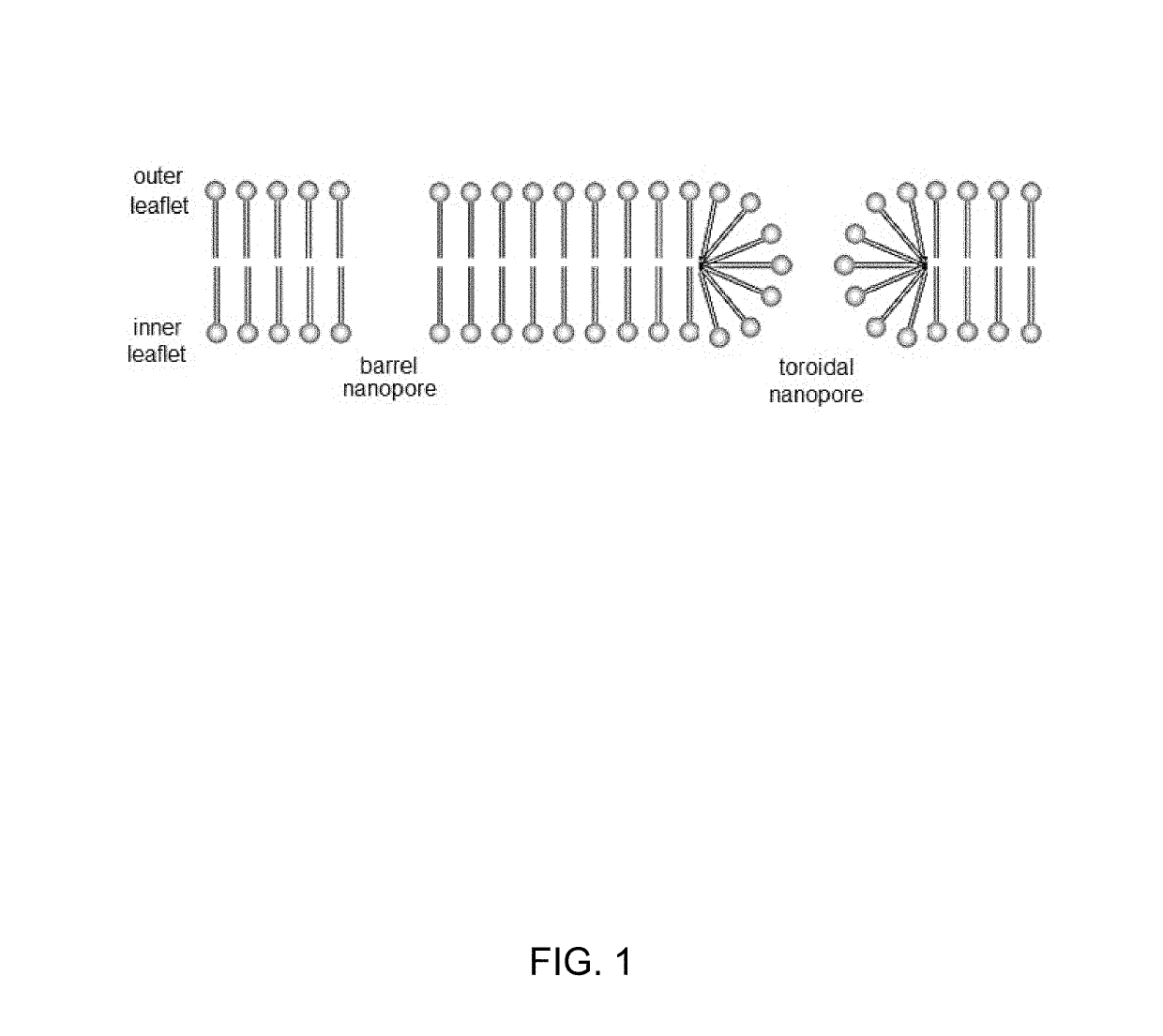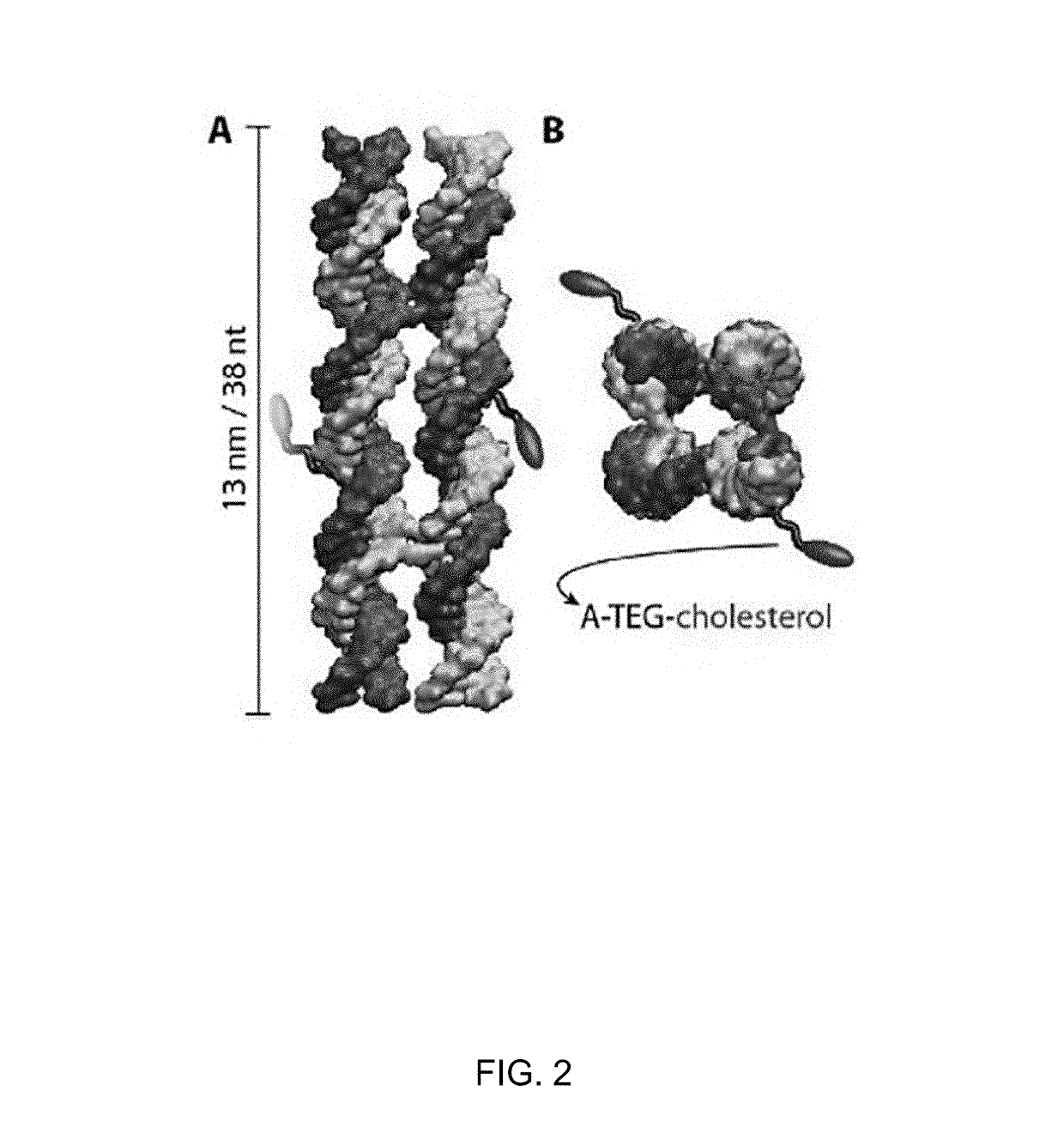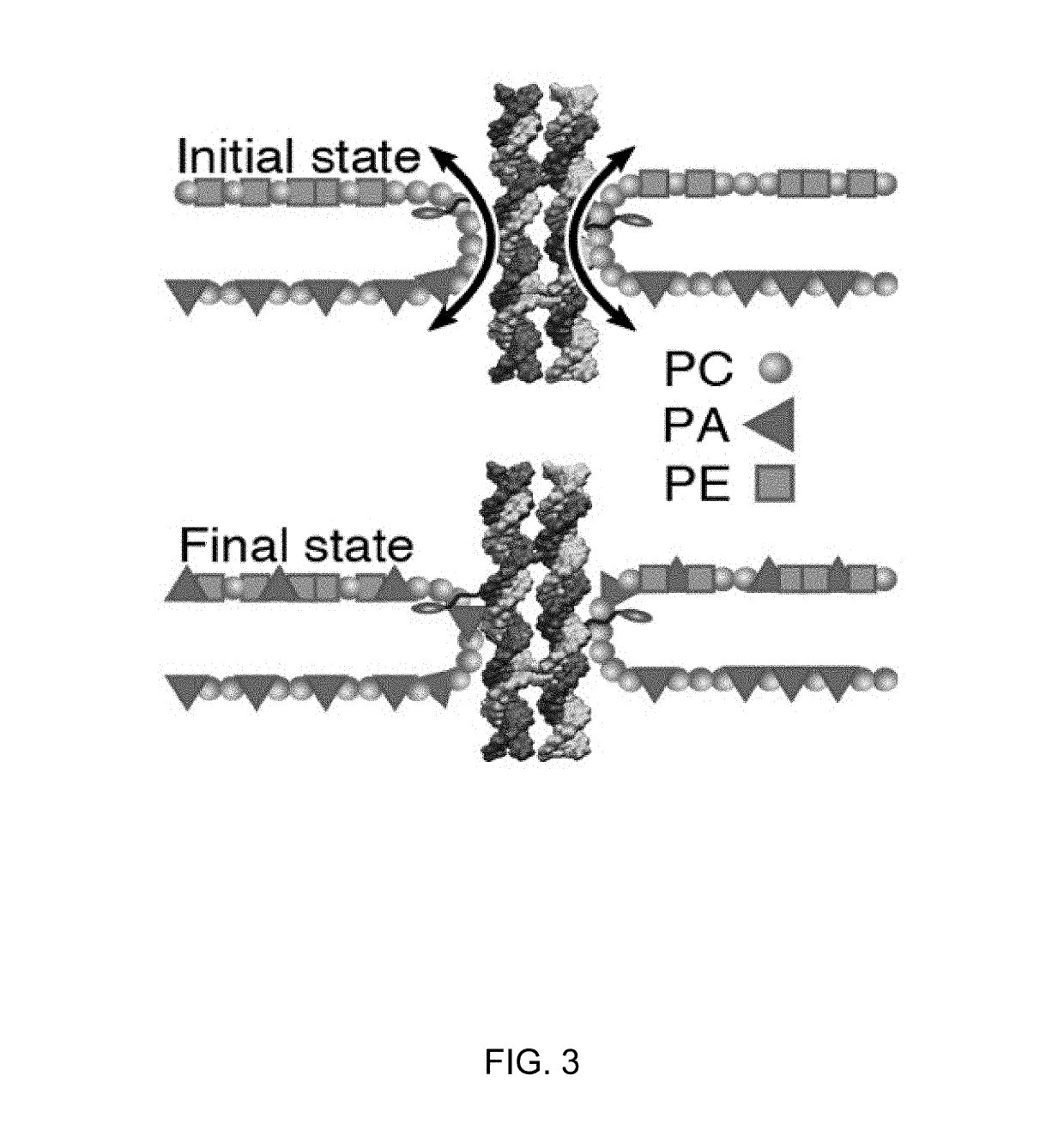Nucleic Acid and Other Compositions and Methods for the Modulation of Cell Membranes
- Summary
- Abstract
- Description
- Claims
- Application Information
AI Technical Summary
Benefits of technology
Problems solved by technology
Method used
Image
Examples
example 1
Scramblase Built from DNA Nanostructure
[0102]Mimicking enzyme function and increasing performance of naturally evolved proteins is one of the most challenging and intriguing aims of nanoscience. The present example employs DNA nanotechnology to design a synthetic enzyme that substantially outperforms its biological archetypes. Consisting of only eight strands, this DNA nanostructure spontaneously inserts into biological membranes by forming a toroidal pore that connects the membrane's inner and outer leaflets. The membrane insertion catalyzes spontaneous transport of lipid molecules between the bilayer leaflets, rapidly equilibrating the lipid composition. Through a combination of microscopic simulations and fluorescent microscopy, the lipid transport rate catalyzed by the DNA nanostructure was determined to exceed 107 molecules per second, which is three orders of magnitude higher than the rate of lipid transport catalyzed by naturally occurring biological enzymes. The results furt...
example 2
nd Incorporation of the Hydrophobic Tags into the Nanostructure
[0106]To verify the folding and incorporation of these hydrophobic tags into the nanostructure, non-denaturing polyacrylamide gel electrophoresis (PAGE) was performed on constructs folded from either eight unmodified DNA strands, or with one or two cholesterol-modified oligonucleotides (FIG. 4, panel B). The gel shows intensity bands that, at the same experimental conditions, shift towards shorter run lengths with every additional cholesterol moiety. The observed shifts are consistent with the increased molecular weight and cross-sections of the modified DNA nanostructures, which confirms their successful assembly and incorporation of the cholesterol tags. PAGE was performed without surfactants, demonstrating that no detergents are necessary to form the monomeric, functional constructs.
example 3
ng if Nanostructures could Induce Lipid Scrambling
[0107]Having experimentally validated the feasibility of folding the cholesterol-modified DNA nanostructures, used the all-atom molecular dynamics (MD) method was used to determine if the structures could induce lipid scrambling when inserted into a lipid bilayer. Following a previously described protocol (18), an all-atom model of the DNA nanostructure embedded in a diphytanoyl phosphatidylethanolamine (DPhPE) lipid bilayer membrane was built and solvated in 1 M KCl. The entire system was first equilibrated for ˜230 ns having the DNA nanostructure constrained to its initial idealized conformation, allowing for lipids and water to adopt an equilibrium configuration where the lipid head groups form a toroidal pore around the nanostructure (FIG. 5, panel A; see below detailed description of the simulation protocols). The system was then simulated without any constraints for ˜2 μs (FIG. 5, panel B). Comparison of the initial and the fin...
PUM
| Property | Measurement | Unit |
|---|---|---|
| Fraction | aaaaa | aaaaa |
| Width | aaaaa | aaaaa |
| Width | aaaaa | aaaaa |
Abstract
Description
Claims
Application Information
 Login to View More
Login to View More - R&D
- Intellectual Property
- Life Sciences
- Materials
- Tech Scout
- Unparalleled Data Quality
- Higher Quality Content
- 60% Fewer Hallucinations
Browse by: Latest US Patents, China's latest patents, Technical Efficacy Thesaurus, Application Domain, Technology Topic, Popular Technical Reports.
© 2025 PatSnap. All rights reserved.Legal|Privacy policy|Modern Slavery Act Transparency Statement|Sitemap|About US| Contact US: help@patsnap.com



